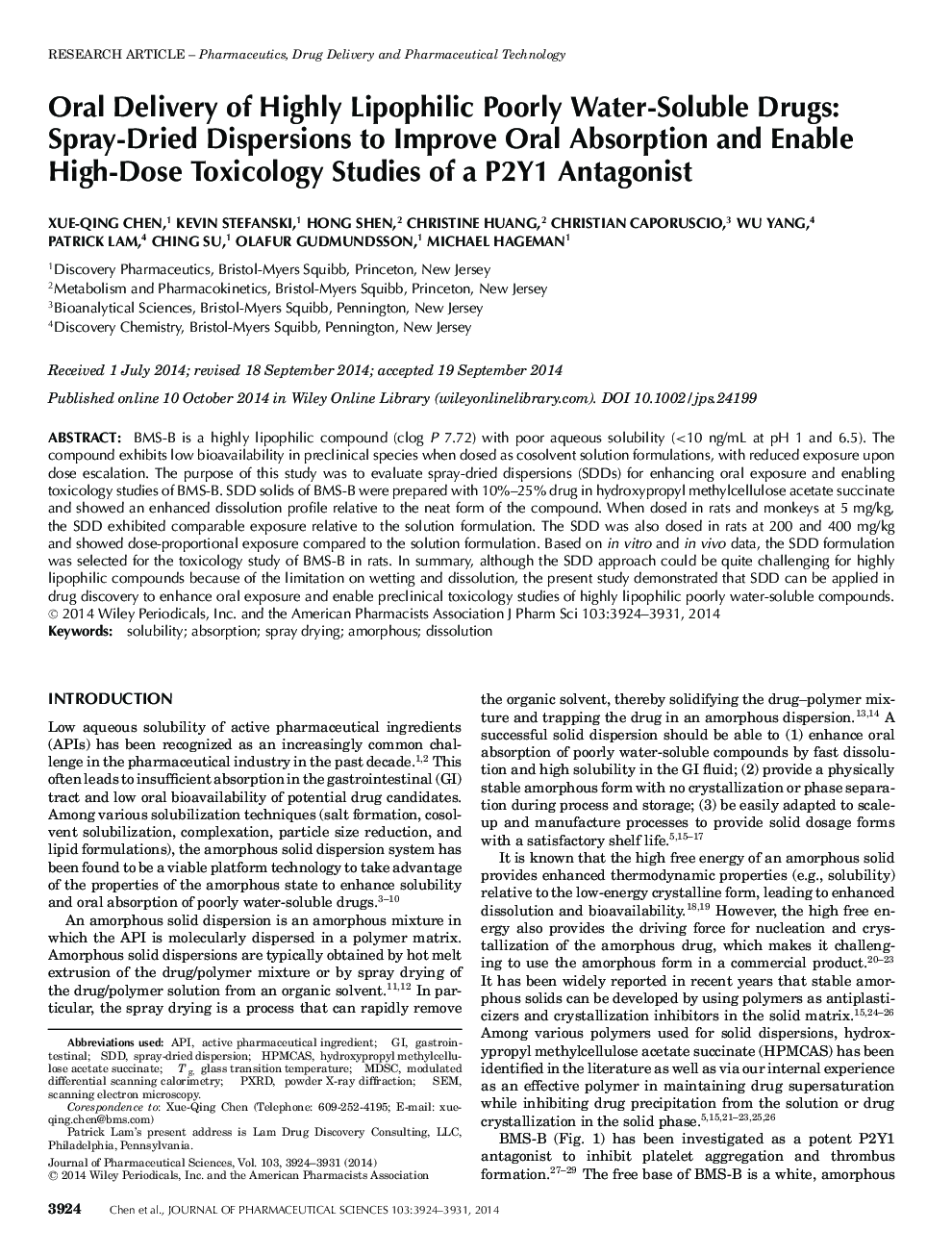| Article ID | Journal | Published Year | Pages | File Type |
|---|---|---|---|---|
| 10162422 | Journal of Pharmaceutical Sciences | 2014 | 8 Pages |
Abstract
BMS-B is a highly lipophilic compound (clog P 7.72) with poor aqueous solubility (<10Â ng/mL at pH 1 and 6.5). The compound exhibits low bioavailability in preclinical species when dosed as cosolvent solution formulations, with reduced exposure upon dose escalation. The purpose of this study was to evaluate spray-dried dispersions (SDDs) for enhancing oral exposure and enabling toxicology studies of BMS-B. SDD solids of BMS-B were prepared with 10%-25% drug in hydroxypropyl methylcellulose acetate succinate and showed an enhanced dissolution profile relative to the neat form of the compound. When dosed in rats and monkeys at 5Â mg/kg, the SDD exhibited comparable exposure relative to the solution formulation. The SDD was also dosed in rats at 200 and 400Â mg/kg and showed dose-proportional exposure compared to the solution formulation. Based on in vitro and in vivo data, the SDD formulation was selected for the toxicology study of BMS-B in rats. In summary, although the SDD approach could be quite challenging for highly lipophilic compounds because of the limitation on wetting and dissolution, the present study demonstrated that SDD can be applied in drug discovery to enhance oral exposure and enable preclinical toxicology studies of highly lipophilic poorly water-soluble compounds. © 2014 Wiley Periodicals, Inc. and the American Pharmacists Association.
Related Topics
Health Sciences
Pharmacology, Toxicology and Pharmaceutical Science
Drug Discovery
Authors
Xue-Qing Chen, Kevin Stefanski, Hong Shen, Christine Huang, Christian Caporuscio, Wu Yang, Patrick Lam, Ching Su, Olafur Gudmundsson, Michael Hageman,
